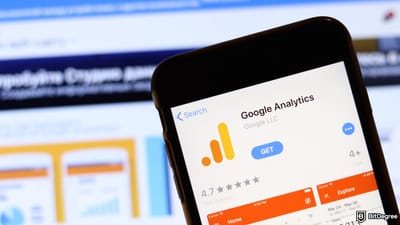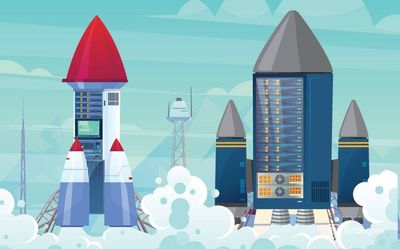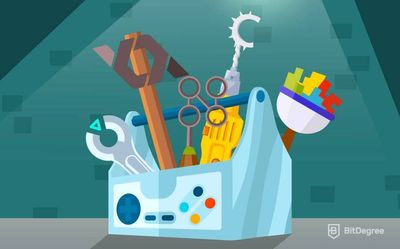Stop overpaying - start transferring money with Ogvio. Sign up, invite friends & grab Rewards now! 🎁
Python is a diverse programming language. Just pick the right tools, libraries, and you can become a true innovator. Starting to learn any programming language takes guts, will, time, and more than a few energy drinks. Therefore, you should start from setting goals and learning what is Python used for.

After all, you want to be excited about something you are learning, right?
This tutorial briefly introduces Python machine learning, the creation of desktop, game and web applications, and data mining. Hopefully, this information inspires you to learn Python, be it by yourself, with a tutor, or by choosing an online course provider, such as DataCamp.
Table of Contents
- 1. What Is Python in General?
- 2. Teaching Machines to Learn
- 3. Why is Python the Best Programming Language for AI?
- 3.1. Previous Successful Python AI Projects
- 4. How to Make a Bot With Python?
- 5. Python Loves Web Development
- 6. Data Mining and Python
- 7. GUI-Based Desktop Programs
- 8. Develop Games and 3D Graphics With Python
- 9. Conclusions
What Is Python in General?
Python is surprisingly easy to read. As an interpreted language, it does not transform code to become computer-readable. Python is also a high-level, general-purpose programming language. Developers designed it to become a chameleon of the programming world.
Latest DataCamp Coupon Found:Additionally, Python aims to produce a clearer and more logical code not only for small-scale projects but for larger ones as well.
You can compare Python to a Rubik’s cube: it has many sides to it so you can twist and play around. The language is capable of implementing tons of computer procedures to produce technology that can astound you.
A few interesting facts, illustrating the actual impact of this language, and what is Python used for:
- The famous BitTorrent started as a Python Program.
- The NSA (National Security Agency) applies Python for intelligence analysis and cryptography.
- Developers wrote Youtube using Python (among other languages).
- Google is no stranger to Python as well: the company based its notorious web search system on it.
Teaching Machines to Learn
Machine learning is a revolutionary concept. It improves personalization and future tendency predictions. In the last decade, artificial intelligence has transformed various industry fields. It gave a chance for new, unheard-of technologies to rise from nothing. Well, not nothing: Python.

Creating artificial intelligence-powered software sounds complicated. Machine learning with Python teaches computers to learn from specific patterns and recognize them, similarly like people teach children. Additionally, Python AI is capable of making predictions, estimating potential answers, and so much more!
Machine learning is driven by the creation of neural networks, one of the concepts that answer a question of what is Python used for. In the simplest terms, Python neural network is a system consisting of algorithms based on the human brain. With Python, developers create advanced networks and use them to make machines learn by analyzing examples.
Why is Python the Best Programming Language for AI?
- The ecosystem of Python strongly supports the creation of AI and ML. There are many well-maintained resources and tutorials. They provide details about which Python libraries to use for artificial intelligence and deep learning.
- Another important issue for what is Python used for is data management. Properly managing data in the current stage of digital evolution is crucial. Human beings are limited in this quest, but artificial intelligence is capable of processing huge amounts of complex data with high efficiency and lower production costs.
- Since the syntax of Python resembles English, it is relatively easier to learn. Furthermore, this language allows processing and handling complex systems.
Previous Successful Python AI Projects
Creating Python AI has already been proven to be highly successful. The traveling industry was enhanced when Skyscanner applied an unsupervised Python machine learning algorithm. At a low-cost and high-efficiency, it estimated the behavior of new airplane routes and concluded potential destinations for travelers.

Another example, proving that Python is the best programming language for AI, is its involvement in the advancement of the healthcare sector. Python AI projects are revolutionizing disease prediction and injury detection, making it less difficult to track patients’ health and maintain it.
Furthermore, Python helps health-related applications to emerge. AiCure is one of the available mobile apps that makes sure patients take their medications as prescribed. This example is precisely what is Python used for: to enhance technology and our lives.
If you are only starting to read about machine learning in Python, it would be best to start exploring the possibilities with the Keras library. It provides a simplified version of creating Python neural networks. After that, you should begin exploring TensorFlow, PyTorch, or Theano.
How to Make a Bot With Python?
Bots are programs for performing specific tasks over the Internet. Such applications execute repetitive actions much quicker than humans.

For instance, Twitter is often the target of bots, sending the same or similar messages a hundred times a day. However, bots can also be useful for technical or any assistance as they can generate responses to users’ input. As a result, customer support becomes more productive.
Bots are one of the concepts when it comes to what is Python used for. It is one of the main languages to use for creating bots.
First of all, let’s review the potential open-source bot examples:
- python-rtmbot is a popular bot framework for constructing Slack bots with Real-Time Messaging (RTM) API over WebSockets.
- GitHub provides endless resources for creating bots, including code snippets and useful tips.
- Errbot is a chatbot for creating bots for Slack, Discord, Hipchat. The main goal of Errbot is to allow people to generate their programs by manipulating the provided Python source code.
Python Loves Web Development
Web development is a broad concept. It includes all activities performed to produce web sites. The complexity of this process depends on the type of product developed.
What is Python used for web development? It is a tool for developing back-end web applications. Django, Flask, and Falcon are the most popular frameworks that developers use for inspiration and retrieving bits and pieces of code for their web projects.
Web browsers do not execute Python: they run JavaScript. Therefore, you can use the pyjs project to compile from Python to JavaScript. Nevertheless, most web applications contain both JavaScript and Python: web browsers run JavaScript while Python executes on the server-side.
Data Mining and Python
Data mining is a process of analyzing large databases to construct tendency predictions. This process is complex. Data scientists investigate large amounts of information and base certain assumptions on them. Data mining includes analysis of social networks, crime imaging, etc.
Another thing for what is Python used for is to organize and clean data. It is considered as one of the best programming languages to do it. Additionally, machine learning with Python simplifies the data analysis with the use of algorithms.
Python is notorious for the full range of frameworks, providing huge numbers of pre-written code snippets that allow developers to enhance their projects. The same applies to data mining. Here is a list of most popular frameworks for conducting data analysis:
- Numpy is the leading framework designed for numerical computations in Python.
- SciPy is a module for science, mathematics, and engineering.
- Scikit-Learn is a Python machine learning framework for productive data mining, allowing to perform the regression, clustering, model selection, preprocessing, and classification processes.
- Dask is a framework for advanced parallelism for analytics and scaling thousand-node clusters.
GUI-Based Desktop Programs
Graphical user interface (GUI) is also what is Python used for. GUI lets people interact with computers using visual elements such as icons or pictures instead of text-based commands. There are many modules available for creating a GUI with Python. Therefore, we briefly indicate the most commonly used ones:
- Tkinter is a built-in Python interface. This GUI toolkit runs on all of the most popular platforms like Microsoft, Linux, and Mac OS X.
- PyGTK is a free toolkit that helps to create graphical interfaces.
- wxPython is a binder for the cross-platform GUI toolkits and wxWidgets. At first, developers created wxPython using C++. However, Python replaced C++.
- Kivy is a Python library for generating mobile apps and multi-touch application software. It is a great choice for defining user interface and interactions.
Develop Games and 3D Graphics With Python
One the list concerning what is Python used for it is important to mention that it is also a suitable candidate for game development. Once again, there are quite a few frameworks and tools for game and graphic creation:

- PyGame is probably the first choice for many developers using Python. The excellent library provides modules for producing fully featured games and multimedia programs. Additionally, beginners should consider this framework as the provided examples help to understand game development more. Do not expect it to explain every process step-by-step, but the library is a decent starting point.
- PyOpenGl is a wrapper for OpenGL programming. It contains many examples of how to create 3D models.
- Panda3D is an open-source framework for 3D rendering and game development.
- Blender is a sophisticated tool for creating 3D graphic models. The tools apply an embedded Python interpreter for generating 3D games.
- Arcade is a Python library for introducing 2D games into the world.

Did you know?
Have you ever wondered which online learning platforms are the best for your career?
Conclusions
Explaining what is Python used for is not always easy. There are a lot of layers to peel off to get a better look at the capabilities of Python. After reading about the possible uses, we recommend you learn the basics. And you can start from BitDegree's interactive Python tutorial, or by picking a relevant course on platforms such as DataCamp.
This tutorial answers some essential questions, such as the dilemma between choosing Java or Python. Read it to get some useful insights and be one step closer to becoming a Python programmer!
Before we part our ways, let’s quickly review the main points and ideas from this tutorial:
- Python is a flexible programming language for both teaching machines to learn and for analyzing extensive amounts of data.
- Python is one of the best programming languages for AI creation. Choose it because of its simple syntax, a wide variety of frameworks with hundreds of source codes, and a supportive user system for beginners.
- Data scientists should practice analyzing information with Python since it simplifies the complicated process of interpreting data, detecting important insights, and generating predictions.
- The creation of bots, desktop, web, and game development is also one of the examples of what Python is used for.
Learning Python should not be considered difficult: master the basic concepts and get to work. We hope the success stories of Python usages inspired you to learn. Start exploring different frameworks for more efficient and productive workflow!











